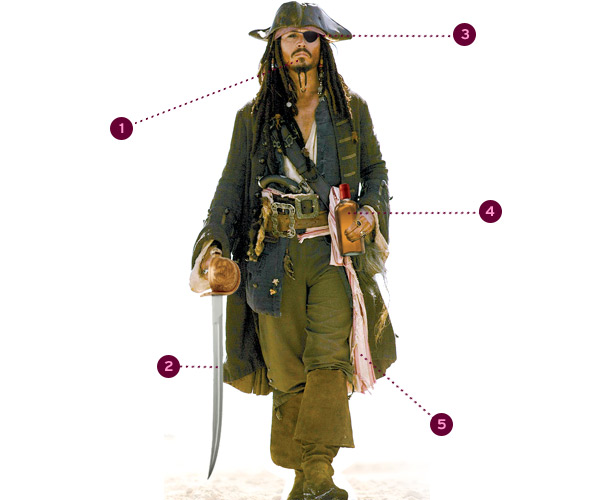
The recent surge of pirate-related news got us thinking about those buccaneers of yore: What were they really like? What’s pure blarney? We asked Tom Skwerski, the project manager of the new Field Museum exhibition Real Pirates, to give us the lowdown on the golden years of the 1700s.
1. It’s arrrgh-uable: Pirates might have used their own language to communicate, Skwerski says, but we don’t really know. The ragtag crews comprised members from Africa, Europe, the Caribbean, even North America, but they weren’t very literate, so most conjecture is based on artifacts, not written records.
Rocking the boat vote: “You think of the captain as being in charge, but [decisions] often came up for a vote,” Skwerski says. Although pirates split their booty fairly equitably, shipmates wounded during a siege usually scored an extra cut of treasure.
2. What’s with all the swords? Although single-shot muskets were available, they were a huge pain to load—not to mention keep dry on the high seas. Swords were a practical, if swashbuckling, weapon of choice.
3. Why the high eyeball attrition? A life of pillage and plunder was a dangerous one, indeed. Some pirates lost eyes to bullets, but many were wounded during naval battles by flying splinters.
4. Yo, ho, ho? Yes. Fresh water was hard to come by at sea, which meant rum was at a premium. “Pirates drank most of their treasure,” Skwerski says. But it wasn’t all drunken debauchery: Turns out pirates enjoyed plenty of tea, too.
5. Does this smell clean to you? Pirate garb wasn’t exactly a burlap sack; the outlaws wore fine silks whenever they could. “When they captured another ship, whatever nice clothes they could get, they’d take,” says Skwerski. “There wasn’t a lot of laundry then.”
GO: Real Pirates. Feb 27–Oct 25. Open daily 9-5. $22. The Field Museum, 1400 S Lake Shore. fieldmuseum.org.
Photography: (Pirates of the Caribbean) Walt Disney Pictures, (sword) mbphoto/istockphoto.com, (rum) © Tim McAfee/istockphoto.com, (eye patch) © Daniel R. Burch/istockphoto.com


